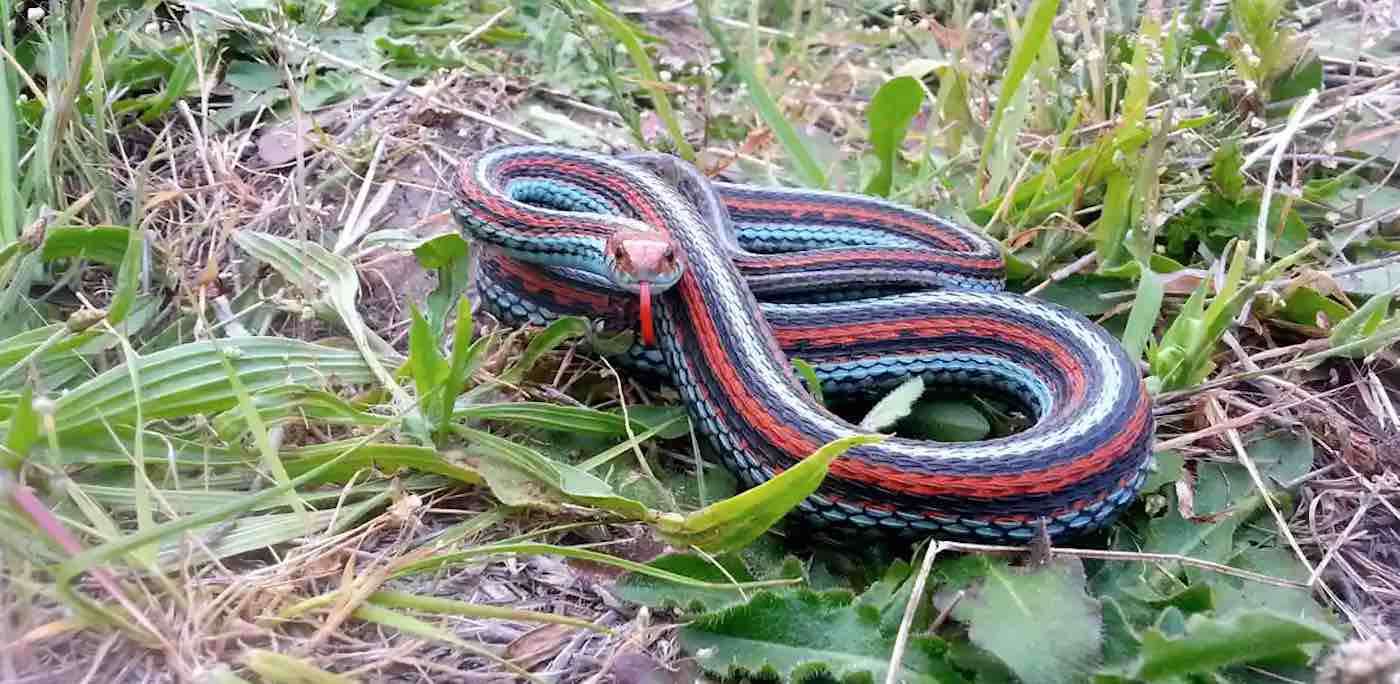Snake Photo Posted on Instagram Leads to Discovery of New Species From the Himalayas
A snake photo posted on Instagram from the Himalayas has led to the discovery of a new species, called the Oligodon churahensis.

One of the most beautiful of its species, the garter snake that inhabits the San Francisco peninsula is also the most endangered of its kind. Fortunately for the California serpent, it has human protectors who have given it a safe haven near the runways of the San Francisco International Airport.
The San Francisco garter snake (thamnophis sirtalis tetrataenia), which can grow to three-feet in length, has skin that looks like a black canvas painted with racing stripes of bright orange and neon turquoise.
As the Bay Area has grown and developed, the wetland habitat that is needed to sustain the harmless snake has diminished, so the animal was listed as endangered 54 years ago. Brutal droughts have also thinned its population, and that of their prey, as well.
While the snake is mostly isolated around the San Francisco peninsula, they are thriving in numbers near the tarmac of the airport known as SFO.
A tract of 160 privately-owned acres has been put to work to save the beautiful reptile, including the construction of many small ponds where the snake can keep moist, breed, and hunt for its favorite prey: the red-legged frog—which is also endangered and given sanctuary on the SFO runway lawn.
The officials who own the land and operate the airport now boast that they've kept 1,300 snakes happy and fed while the U.S. Fish and Wildlife Service (FWS) looks for a better solution.
In fact, the recent survey by the FWS declared this to be the largest population of this particular garter snake anywhere—something the SFO brass found to be a "pleasant surprise."
"Everything that happens there is designed to protect these species," said SFO spokesperson Doug Yakel, according to The Guardian.
"For us, success would be that there is a stable thriving population, but to find out we had the largest population—it was really a pleasant surprise."
In the rest of the Bay Area, cats and dogs have become two of the snake's top predators. But, at the airport the snakes pretty much have the land to themselves—a double-positive as the airport wildlife biologist can make sure that they are insulated from the effects of climate change that would normally damage wild populations.
The frogs too, have ponds they can safely raise their tadpoles in.
"As our airport continues to evolve, this is the one place that continues to stay the same," Yakel said. "We want to continue to provide a good stable environment for these two endangered species. Hearing that they are thriving—that is the ultimate validation."
In the 1985 recovery plan laid out alongside the endangered listing, the FWS wrote that 10 populations of at least 200 snakes must be stable or growing for 15 consecutive years before the snake can be considered for delisting. By this criteria, at least one habitat, SFO, has come through with spades.
Give This Snake Some Travel Miles By Sharing On Social Media…
Be the first to comment